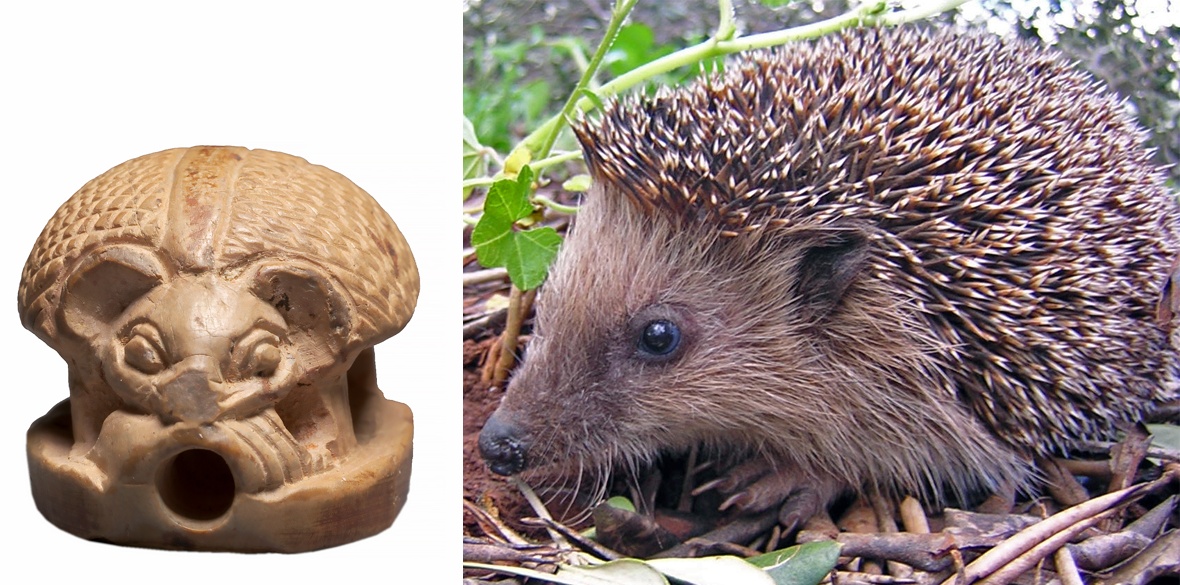This is the last article you can read this month
You can read more article this month
You can read more articles this month
Sorry your limit is up for this month
Reset on:
Please help support the Morning Star by subscribing here
COVID-19 has not been detected in hedgehogs. I’ll say that again, Covid-19 has not been detected in hedgehogs.
Some media outlets are quoting a new study implicating hedgehogs as a possible host for coronavirus. The study actually identifies no less than 876 mammal species that might be hosts. These include cats and rabbits.
Unfortunately, it’s the lovable hedgehog that has been picked, completely at random and with absolutely no evidence to make a good cuddly media story and headlines that tug at every animal lovers heartstrings.
There is no evidence whatsoever to suggest that hedgehogs are likely to transfer coronavirus to humans but we know that scare stories spread quickly, especially on social media. This nonsense story could all so easily turn public opinion against our prickly and useful friend.
A wide range of viruses are known to infect mammals and birds. The new study identified hedgehogs merely as one of a thousand theoretical hosts to coronavirus. So if you do nothing else spread that message wide: to date Covid-19 has not been detected in hedgehogs.
The hedgehog (Erinaceus europaeus) can be called an urchin, hedgepig or furze-pig but best of all is the old Romany name of hotchi-witchi. Sadly they are disappearing from our countryside as fast as tigers are worldwide. Once common, they are constantly under threat from habitat loss caused by the reduction of hedgerows, an increase in intensification of our agricultural landscapes as well as urban development.
Today we have less than a million hedgehogs in Britain. In the 1950s we had over 36 million. They don’t need any nonsense campaigns to blame them for the spread of Covid-19.
Hedgehogs have a degree of legal protection in Britain — they are listed on schedule six of the Wildlife and Countryside Act (1981), which makes it illegal to kill or capture wild hedgehogs; they are also listed under the Wild Mammals Protection Act (1996), which prohibits cruel treatment of hedgehogs.
It would be much better if they were reclassified under the Wildlife and Countryside Act to make them a schedule five species. This would introduce a legal imperative to search for hedgehogs on sites planned for new developments.
If you have a garden there is much you can do to help them. They need to be able to roam far and wide in search of food, mates and nesting sites. Adults will travel more than a mile or two in a night over many acres covering entire housing estates and neighbourhoods.
If you want to feed them when they visit please don’t give them bread and milk. Dried dog or cat food is a much better option. Make sure they can reach water to drink too.
Get together with your neighbours to cut a five-inch (13cm) square hole in your fence or dig a channel beneath garden boundaries to link your gardens.
Log and leaf piles and wilderness areas make great places for hedgehogs to nest and hibernate. Local wildlife and dedicated preservation societies sell purpose-built hedgehog homes or you can build your own using one of the many simple designs from the internet.
Hedgehogs eat hundreds of invertebrates, such as snails, slugs and worms every night, so there is no need to use poisonous slug pellets.
They have poor eyesight but are quite curious, meaning they fall into holes and get stuck, so make sure you cover up any open drains and gullies.
If you have a pond, make sure you provide an access point so that hedgehogs can climb back out — this can be achieved by using a ramp or placing some stones at one end.
All over the country organisations and individuals are doing what they can for the hedgehog. Spring is a busy time for Britain’s rescue centres caring for all injured and orphan wild animals and that certainly applies to those dedicated to hedgehogs.
Hogfields Hedgehog Rescue in Birmingham has bought vital food and water bowls plus new hogs pens. Meanwhile in Shropshire, Pricklebums Hedgehog Rescue has purchased an ultrasound scanner to check whether females are pregnant. Certain medications can harm unborn babies.
You can do you bit too if you have a garden make sure it is really hedgehog friendly. Try to leave an area of your garden wild and uncultivated. Place a hedgehog house somewhere quiet and shady. Sources and designs for hedgehog houses can be found at www.britishhedgehogs.org.uk
If you are lucky enough to have a hedgehog visit your garden do look after, this our most unusual garden mammal, it is a real friend and gardening ally. And now you know it didn’t bring Covid-19.
Walrus Update
Back at the end of April I reported on a very unusual visitor to our coasts. An Arctic walrus (Odobenus rosmarus) appeared, first in Kerry in Ireland then in various spots in Wales and then Cornwall.
The media quickly named the animal Wally although at the time nobody knew it was a male. We now know it is male and is about two years old, but still a juvenile. It seems to be feeding well mainly on shellfish and other small seabed animals.
It spent some weeks in Tenby where it proved a huge visitor attraction. Some curious watchers on paddle boards and other small watercraft got a bit too close despite warnings. It is always important never to disturb marine mammals, not only do you unnerve them but they can be dangerous to you with bites or flipper blows.
There were reports that our walrus had been injured by a collision with a boat but this hasn’t been confirmed. Many marine mammals carry scars from wounds particularly from fast turning ship’s propellers.
Now the walrus has been spotted catching some sun in Les Sables d'Olonne, western France. That is a 650-mile (1,000Km) swim from Tenby, Wales.
Walruses are more often found in the subzero temperature Arctic seas from Alaska, Canada and Greenland to Russia. They are not usually seen as far south as the British Isles. Juveniles are always curious and do often wander a long way. In home Arctic waters our walrus would usually live in open water, and in large groups near to shore or on ice floes.
These marine mammals are extremely sociable, prone to loudly bellowing and snorting at one another, but are aggressive during mating season.
With wrinkled brown and pink hides, walruses are distinguished by their long white tusks, grizzly whiskers, flat flippers and bodies full of blubber.
The walrus is not endangered, it is listed under Article III of the Convention on International Trade in Endangered Species (Cites).
This status gives it some protection by placing restrictions on the global trade of walruses and walrus products like engraved tusks.
After significant fluctuations in walrus populations over the last several hundred years, current populations appear to be stable and may even be thriving.
Walruses can live for more than 50 years. Apart from human hunters, their only serious predators are orcas (killer whales) and polar bears. Not many of them in Wales, Cornwall and the French coast.
Maybe our visitor will be with us for many years to come. It could live on both sides of the Channel. Sadly all too often when a rare sea mammal arrives at out coast it will either disappear in a few weeks or die in our waters. Perhaps our walrus visitor may head North aiming for company and perhaps even a mate.
Our walrus seems to have done very well. Let’s hope he can keep safe and carry on.
If you are lucky enough see the walrus or, indeed any rare species of marine mammal, please be sure to notify the closest marine mammal rescue centre and keep clear disturbing the animal as little as possible.











